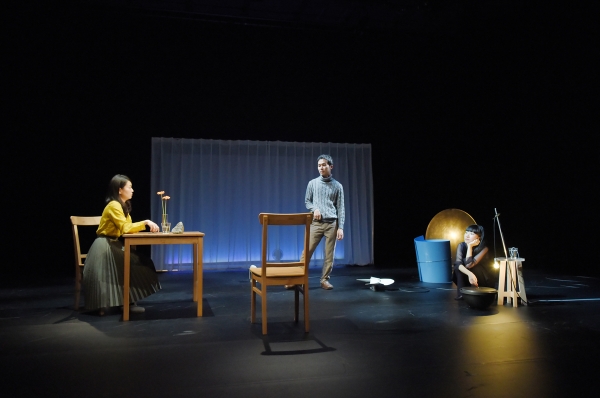Toshiki Okada Time’s Journey Through a Room
[Theatre]Regularly performed in front of European audiences for the last ten years or so now, what makes Toshiki Okada’s work so distinctive is the breathtaking crossover between material of different kinds. His work switches between the informal language of Japan’s younger generations, irreverent choreographies, non-demonstrative acting styles, and sound creation which is torn between noise and the sound of silence... This explosion of our senses propels us way beyond the theatre of hushed voices, and headlong into biting, yet humorous tableaux of our contemporary lives.
Time’s Journey Through a Room portrays the numb pain born from Fukushima’s post-traumatic concentric circles. The onstage trio is a disturbing one: the ghost of a woman, who passes away still clinging to the hope that the nuclear catastrophe would give rise to a new sociopolitical era, her surviving husband, who is forced to face up to reality, and another woman, his present-day partner. Each has sensitivities of a different kind, and these subtleties are revealed in a profusion of details. In order to shed light on these innumerable, profoundly personal, tiny fractures, buried deep in the shockwaves of seismic collision, Okada hones in on the slightest flinch of the body, or wavering of the soul. An ingenious system, invented by Tsuyoshi Hisakado, of extending body movements through sound adds fluidity to this precise representation of psychological states, whilst giving the audience total freedom of the imagination at the same time. Via this unique mixing together, through sound, of words, movements and field recordings, Okada takes a fresh look at the relationship between sound, body, language and space. The result is, as we have come to expect from Toshiki Okada, a work of an essential, extreme nature, in which every second counts.






